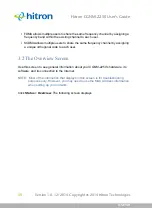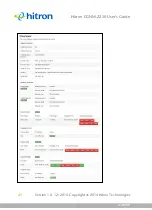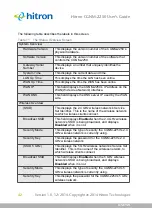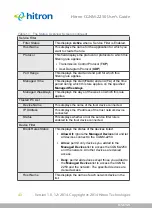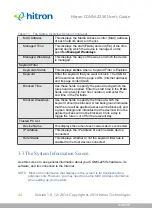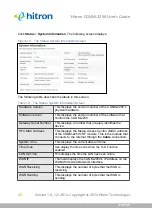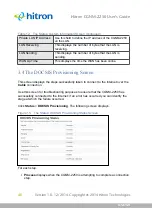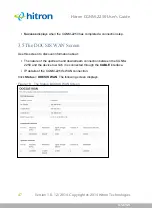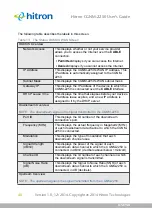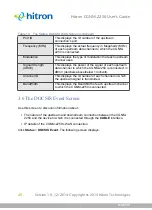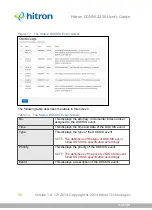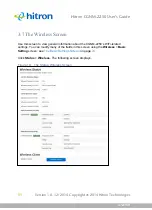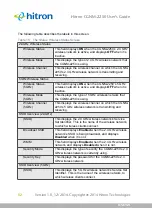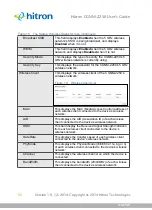
STATUS
Version 1.0, 12/2014. Copyright 2012 Hitron Technologies
38
Version 1.0, 12/2014. Copyright 2014 Hitron Technologies
38
Hitron CGNM-2250 User’s Guide
The data traffic band is separate from the TV band, and each data channel is
separate from other data channels.
3.1.10
Modulation
Transmissions over the cable network are based on a strong, high frequency periodic
waveform known as the “carrier wave.” This carrier wave is so called because it
“carries” the data signal. The data signal itself is defined by variations in the carrier
wave. The process of varying the carrier wave (in order to carry data signal
information) is known as “modulation.” The data signal is thus known as the
“modulating signal.”
Cable transmissions use a variety of methods to perform modulation (and the
“decoding” of the received signal, or “demodulation”). The modulation methods
defined in DOCSIS 3 are as follows:
QPSK
: Quadrature Phase-Shift Keying
QAM
: Quadrature Amplitude Modulation
QAM TCM
: Trellis modulated Quadrature Amplitude Modulation
In many cases, a number precedes the modulation type (for example
16 QAM
). This
number refers to the complexity of modulation. The higher the number, the more data
can be encoded in each symbol.
NOTE:
In modulated signals, each distinct modulated character (for example, each
audible tone produced by a modem for transmission over telephone lines) is
known as a symbol.
Since more information can be represented by a single character, a higher number
indicates a higher data transfer rate.
3.1.11
TDMA, FDMA and SCDMA
Time Division Multiple Access (TDMA), Frequency Division Multiple Access (FDMA)
and Synchronous Code Division Multiple Access (SCDMA) are channel access
methods that allow multiple users to share the same frequency channel.
TDMA allows multiple users to share the same frequency channel by splitting
transmissions by time. Each user is allocated a number of time slots, and
transmits during those time slots.
















